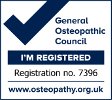Why sitting to much can be unhealthy
A lot of people sit for many hours at work and then come home and sit watching the TV or similar for more hours. These are some bodily issues that occur when we sit too much:
Muscle degeneration
- Weak stomach muscles – when you sit up straight or stand, your abdominal and back muscles are engaged, but if you slump in a chair, they go unused. Tight back muscles and weak stomach muscles can result in an exaggeration of the spine’s natural arch, a condition called hyperlordosis or sway back posture
- Tight hip muscles – sitting for long periods causes the muscles at the front of the thigh and pelvis, the hip flexors, to become tight. This limits the range of motion of the hips and your stride length which has been shown to be a main reason for the elderly to fall. There is a also a connection with increased osteoarthritis in the hips as the joint surface is not being fully utilised
- Weak gluteal or buttock muscles – your buttock muscles are vital in pushing you forward and propelling you forward when you walk. You don’t use them at all when you sit and, once they are used to this and become weak, you become less stable when you are standing and walking. Again, you are more likely to fall if you are elderly.
Leg dysfunction
- Poor circulation in the legs – prolonged sitting slows the blood circulation which can lead to a pooling of fluid in the legs. This can result in swollen ankles, varicose veins and dangerous blood clots called deep vein thrombosis (DVTs).
- Weak bones – especially as we get older, weight-bearing activities such as walking and running keep the leg bones thicker, stronger and denser and prevent the fast-rising problem of osteoporosis.
Neck and back problems
- Neck and shoulder pain – if most of your sitting is at work, you may well be craning your neck forward towards your screen or keyboard or cradling your phone between your head and shoulder while typing. These positions can all cause considerable long-term muscle imbalances and joint problems in the necks and shoulders
- Spinal disc problems – when we move, the soft discs between our vetebrae are soaking up fresh blood and nutrients however, when we are static, these discs become hardened and less fluid and deposits build up around the spinal tendons and ligaments. Disc prolapses or herniations are also more likely in those who sit for long periods.
Organ dysfunction
- Heart disease – prolonged sitting reduces fat burn and blood flow which results in a build up of fatty acids and blockages in the heart vessels, higher blood pressure and elevated cholesterol levels. Those who are least active and most sedentary are two times more likely to suffer from cardiovascular disease.
- Overproductive pancreas – the pancreas produces insulin which stores glucose in the cells of our body for energy. Inactive muscles do not respond as readily to insulin so the body produces more and more which can lead to diabetes and other diseases. ・ Colon, breast and endometrial cancer – Prolonged periods of sitting have been linked with a greater risk of colon, breast and endometrial cancer which is linked to the excess of insulin (noted in the previous point) encouraging cell growth. In contrast, regular movement is linked with a boost in the production of natural antioxidants that kill the free radicals which potentially may be causing the cancer in the first place.
So what can we do to minimise the problems associated with prolonged sitting?
- Sit correctly – aim not to lean forward, keep your shoulders relaxed with your arms close to your sides, your elbows bent at 90 degrees and your feet flat on the floor. You may support your lower back with a cushion.
- Sit on something wobbly – sit up straight with your feet flat on the floor (so that they support about a quarter of your weight) on something like an exercise ball so that you are engaging your core muscles
- Stretch the hip flexors – the quads (on the front of the thighs) and the psoas (attaching to the front of your lumbar spine and the top of your thigh bones) at least once a day. The best way to do this is to do a full lunge (what I call proposal position), with one knee resting on the floor, gently pushing your pelvis diagonally towards the floor. Hold this position with no bouncing for 15 seconds and repeat 3 times each side.
- Regular breaks – walk around for a couple of minutes every advert break or the equivalent if you are sitting at your desk (at least every half an hour)
- Stretches – mobilise your back with a few cat/cow yoga poses if you are able. Get onto your hands and knees and start with a flat back. Breathe in and gently arch your back taking your stomach down towards the floor and your head up towards the ceiling. Hold for a few seconds and then breathe out and gently round your back up towards the ceiling and take your head down towards the floor. Hold for a few seconds and repeat this cycle 4 or 5 times.
- Increase your general activity levels – try to get out for a brisk walk for half an hour every few days at least. The key is to find an activity you enjoy doing – whether it be walking, swimming, cycling or table tennis – it doesn’t matter, just getting active in any way helps.







